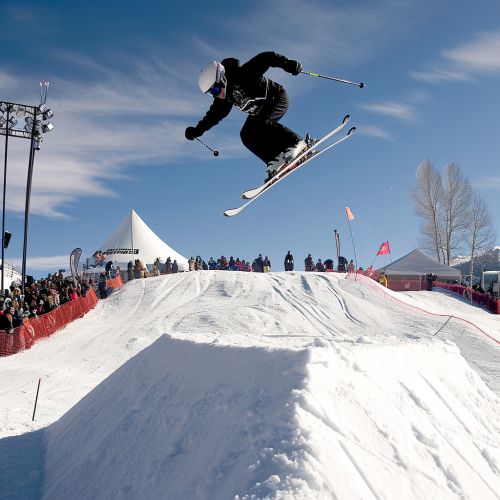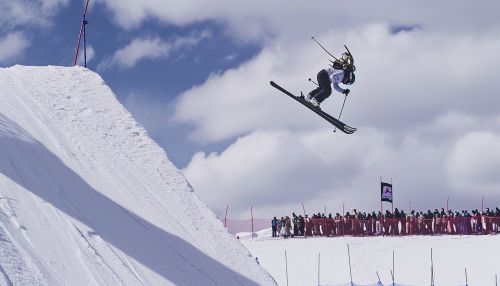Ski flying
Overview
Ski flying is a winter sport discipline derived from ski jumping, in which athletes descend at high speed along a specially designed ramp known as the inrun, before launching off a steeply inclined takeoff ramp, or hill, attempting to travel as far as possible down a landing hill. The difference between ski jumping and ski flying lies primarily in the size of the hill; ski flying hills are significantly larger, enabling jumps of considerably greater distance.


History
Ski flying as a sport has its roots in the early 19th century, when the first ski jumping competitions were held in Norway. The desire to achieve greater distances led to the development of larger hills, and by the mid-20th century, the first ski flying hills were constructed. The first recorded ski flying event took place in Planica, Slovenia, in 1936, where the world record distance was pushed beyond 100 meters for the first time.
Equipment
The equipment used in ski flying is similar to that used in ski jumping, including skis, bindings, boots, and suits. However, due to the greater speeds and forces involved in ski flying, additional safety measures are often employed, such as helmets and wind-resistant suits. The skis used in ski flying are also longer and wider than those used in ski jumping, to provide more lift and stability during flight.
Technique
The technique used in ski flying is similar to that used in ski jumping, involving a crouched position during the inrun, a powerful leap at the takeoff, a flight phase where the skier attempts to maintain an aerodynamic position, and a telemark landing. However, due to the greater distances involved in ski flying, athletes must pay particular attention to aerodynamics and flight control.
Competition
Ski flying competitions are governed by the International Ski Federation (FIS), which also oversees ski jumping. Competitions are scored based on distance and style, with points deducted for falls or unstable landings. The current world record for the longest ski flying jump is 253.5 meters, set by Stefan Kraft of Austria in 2017.
Risks and Safety
Ski flying is considered one of the most dangerous winter sports due to the high speeds and long distances involved. Athletes can reach speeds of up to 100 km/h and spend up to 10 seconds in the air. Accidents can result in serious injuries or even death. However, safety measures such as the use of helmets, wind-resistant suits, and carefully designed landing hills have significantly reduced the risk of injury.
